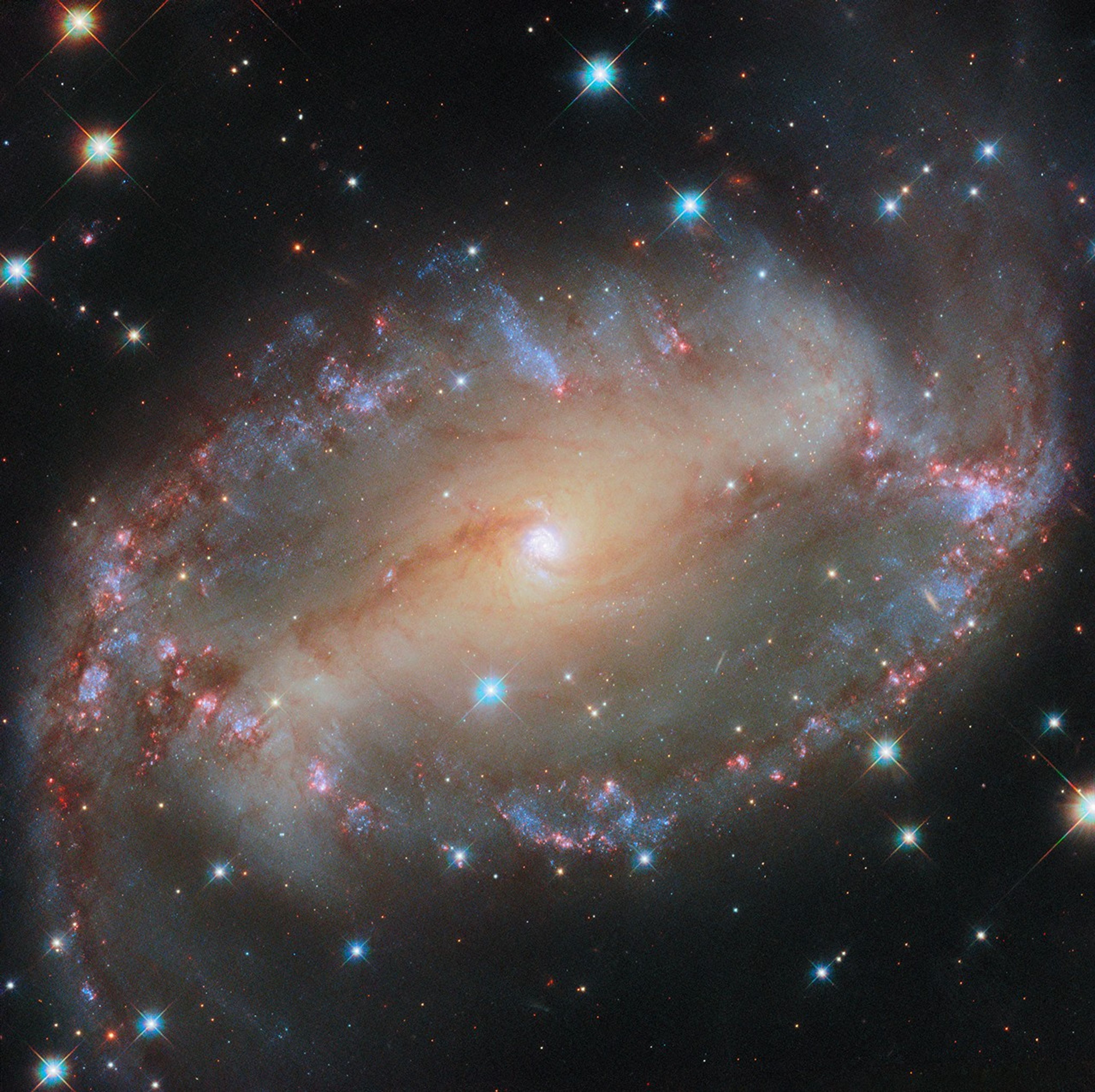6 min read
PROJECT
LISA Charge Management Device (CMD)
SNAPSHOT
With support from NASA, the University of Florida and industrial partner Fibertek, Inc. are developing a precisely controlled ultraviolet light source that will prevent electrostatic noise from obscuring gravitational wave signals measured by the European Space Agency (ESA)-NASA Laser Interferometer Space Antenna (LISA) observatory.
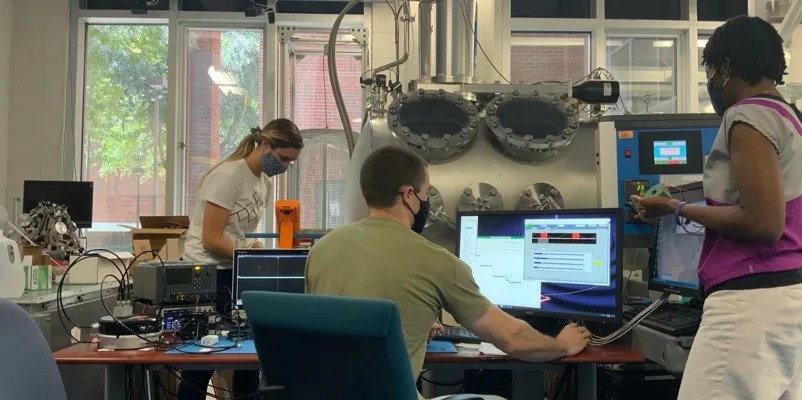
Gravitational waves are minute ripples in space-time caused by the most energetic events in the universe—like the collision of two supermassive black holes. To detect gravitational waves, we will measure the tiny variations in the motion of purely free-falling test masses housed in three Sun-orbiting spacecraft. The CMD is vital for ensuring that electrostatic charge buildup on the test masses does not disturb their motion and obscure the gravitational wave signal.
Gravitational waves enable an entirely new way of observing our universe and therefore provide enormous potential for scientific discovery. The Laser Interferometer Space Antenna (LISA), a European Space Agency mission with a significant contribution from NASA, will be the first mission to detect and observe low-frequency gravitational waves from space, complementing observatories on the ground. The millihertz, low-frequency gravitational wave band is rich in sources, ranging from merging supermassive black holes in the distant universe to smaller compact binary systems, including neutron stars and white dwarfs in our own galaxy. In fact, LISA will be able to observe thousands of sources at all times throughout its mission.
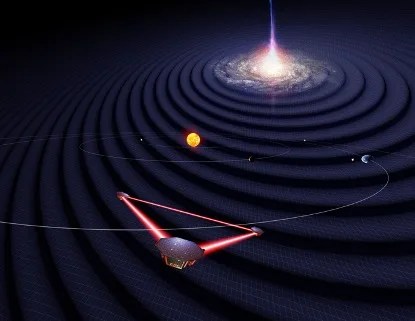
LISA will be the largest instrument ever constructed, consisting of three Sun-orbiting spacecraft that form an equilateral triangle, with each side measuring 2.5 million kilometers in length. Each spacecraft houses two precision inertial sensors that contain free-falling, gold-coated test masses (TM), protected from all disturbing forces so that they follow pure gravitational orbits (geodesics) in space-time. A “drag-free” control system is supplied with measurements of the TM position and commands external micronewton thrusters to force the spacecraft to fly in formation with the test masses. Laser interferometry is used to measure the minute variations in the distance, or light-travel time, between these purely free-falling TMs, caused by gravitational waves.
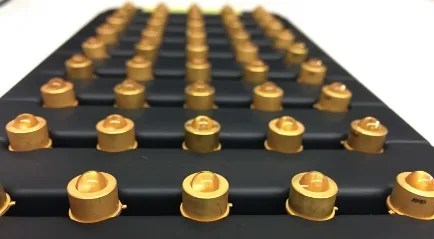
LISA represents the ultimate engineering challenge in precision ranging between spacecraft and precision inertial sensing. Variations in the distance between test masses, spaced millions of kilometers apart, must be measured to 10–11 m/Hz1/2 (a fraction of the width of an atom), and the test masses must experience free-fall at a level below 3×10–16 g/Hz1/2 (i.e., the forces that the TMs experience must be about a trillion times less than those experienced by astronauts in the “zero-g” environment onboard the International Space Station).
To achieve this level of free-fall purity, all disturbing forces acting on the LISA test masses must be reduced below the required level. Electrostatic forces caused by charge buildup on the test masses comprise one such important class of disturbances that must be suppressed. Test mass charge buildup is caused by highly energetic particles that penetrate through the spacecraft and charge the test mass either directly or via secondary electron emission. The CMD controls the electric potential of the test masses using a non-contact approach based on ultraviolet (UV) photoemission. The CMD produces UV photons with sufficiently high energy to liberate electrons from the inertial sensor’s gold surfaces; these electrons then transport electric charge to and from the LISA test masses to eliminate charge buildup.
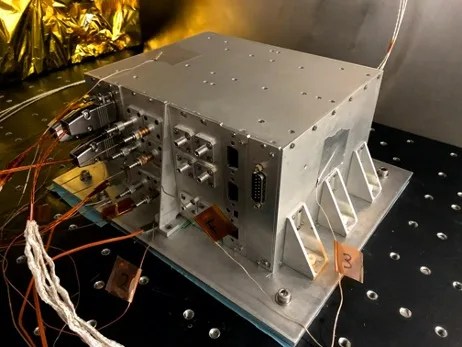
The Charge Management System on LISA Pathfinder, an ESA technology demonstration mission that was launched in 2015, used the 254 nm UV line of mercury lamps as the light source. The LISA mission CMDs will use new, efficient semiconductor UV sources operating at 240–255 nm instead of the mercury vapor lamps used by LISA Pathfinder. Compared to mercury lamps, these UV light-emitting diodes (LEDs) are smaller and lighter; consume less power; and have a wider spectrum selection, a broader operating temperature range, and a higher dynamic range, with an order-of-magnitude improvement in most of these performance areas.
The charge-control scheme enabled by these UV LED-based CMDs allows for more robust, low noise, and passively stable continuous charge maintenance because the modulation rate (bandwidth) of UV LEDs is faster than that of mercury lamps. Pulse modulation of the UV LEDs allows for (i) the generation of UV light over a wide range of power levels for very precise charge control, and (ii) the synchronization of the UV pulses with electric fields in the inertial sensor for charge control that provides robust compensation for possible test mass surface impurities. This method is an important advancement not only for gravitation wave detection from space but also for future missions to map Earth’s gravity field, which will rely on ultra-precise inertial sensors as well.
Over the past three years the CMD team has advanced the technical maturity of the CMD from Technology Readiness Level (TRL) 3 (proof of concept) to TRL-4 (component and/or breadboard validation). A replica TRL-4 CMD unit was delivered to NASA in 2019 and shipped to Italy for system-level testing using replicas of a LISA Pathfinder inertial sensor and test mass. A higher fidelity CMD unit has been designed and fabricated and is currently undergoing environmental testing at the University of Florida. The team is also performing dedicated lifetime and performance testing of the commercial UV LEDs used in the CMD to verify that they meet requirements for LISA. To date, the team has procured and tested over 200 UV LED devices. Ninety-six devices are currently undergoing a two-year lifetime test where they are operated in the same way and over the expected range of temperatures as such devices will encounter during LISA science operations in space. The CMD is expected to achieve TRL-5 (component validation in a relevant environment) this year, and it will reach TRL-6 (prototype validation in a relevant environment) by mid-2023 with support from Fibertek, Inc. Production of the flight units is planned for the second half of the 2020 decade, and the launch of the landmark LISA gravitational wave mission is scheduled for 2034.
PRINCIPAL INVESTIGATOR
Dr. John W. Conklin, University of Florida
PROGRAM MANAGER
Dr. Peter Wass, University of Florida
SPONSORING ORGANIZATION
Astrophysics Division

